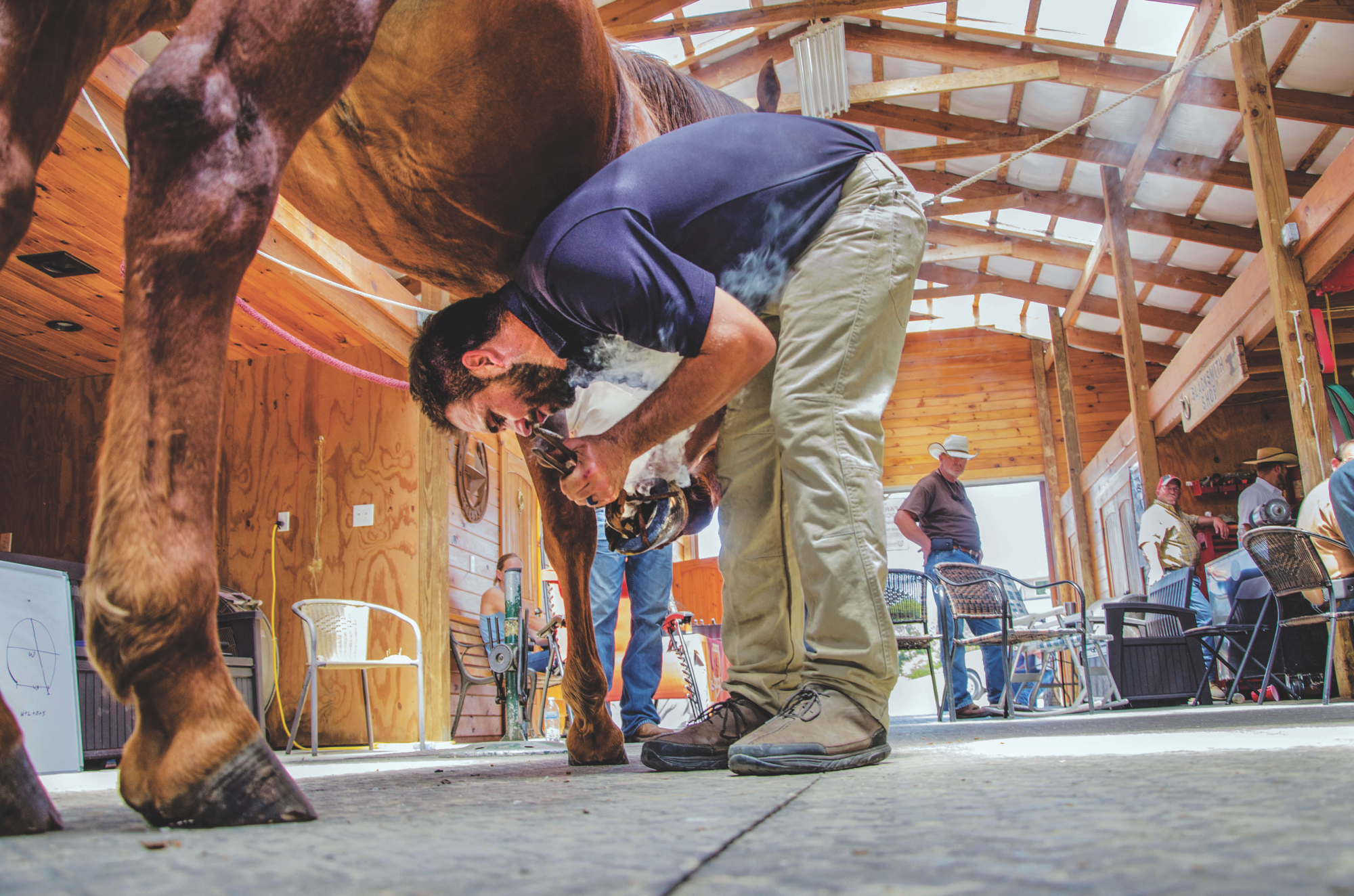The horse is a fascinating puzzle that a farrier must analyze and put together in the form of an appropriate trim and shoeing job.
Part of the puzzle involves analyzing static and dynamic balance. When farriers discuss which one is more important, the choices and rationale behind each vary. For Spring Hill, Tenn., farrier Jake Hall, it’s clear which one should be prioritized.
“Static balance is the most important,” says the former therapeutic farrier at Virginia-Maryland College of Veterinary Medicine in Blacksburg, Va. “If a horse is not statically balanced and we close joint spacing, then we’re putting more stress on collateral ligaments.”
The counter argument is that the ground in never flat. Horses often are ridden in the field. Yet, when the joint is pinched on one side and open on the other, less stress is needed to snap a collateral ligament, Hall says.
“If both sides of the joint are open, we know that the good fluid in the joint will do its job more properly, the collateral ligaments will not be stressed and the horse is just going to be happier,” he says. “The horse is also less likely to get bone on bone and stress other ligaments. Yes, a horse can go out there and hit a pothole, hit a big jump or turn real hard and stress the collateral ligament. There’s nothing we can do about that. All we can do is set up the horse the best way that we can.”
What do you place a higher priority on — static or dynamic balance? Tell us in the comment section below.
For more on conformation and analyzing balance, read “Managing Conformational Faults: A Farrier’s Approach” in the September/October 2017 issue of American Farriers Journal.









Post a comment
Report Abusive Comment